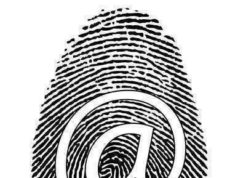
Identity theft, though it has taken on new forms and has become significantly more common, is not a new crime. The history of identity theft extends backwards to the first times that some form of verification of identity was used.
While this does likely extend all the way back to ancient times, the types of identity theft seen in those days were likely the most basic forms, simple impersonation and lying. More modern types of identity theft likely began with the advent of credit cards, and the use of more and more identity verification processes in government; identity theft is actually less and less common the fewer opportunities for identity verification there are.
Probably the earliest of the modern types of identity theft was simple dumpster diving, when the perpetrator would go through the trash of his or her victim in the hopes of finding necessary information for identity theft amidst the other detritus.
Bills and other documents easily hold the information necessary to commit acts of identity theft, and early on in the modern history of identity theft it was likely that there were very few blocks that would have prevented such an easy and blatant form of identity theft. For example, simply finding out the bank account number of the victim might have been enough to perpetrate acts of identity theft in those days.
Another of the earliest types of identity theft was the phone scam, a ploy essentially involving over-the-phone deception of the victim in order to find out important information. Again, early on in the modern history of identity theft, it was likely that general knowledge about the dangers of identity theft and the methods for its prevention was not very well-disseminated, nor was it very in-depth. As a result, it would've been all too easy to convince victims to hand over important information on the phone, using only a simple set of lies.
As an example, imagine an instance in which the perpetrator phones the victim to tell the victim that he or she is now being accepted for a vastly increased line of credit, with greatly lowered interest rates. The victim might be willing to hand over information about bank accounts and credit cards to the perpetrator in order to have access to this offer, without even thinking about issues of safety.
Even more information, like the victim's birth date or social security number, could have been requested in those days, and the victim might not have known enough to realize that he or she should not be giving that information out to an untrusted source.
But even for all that identity theft seemed much easier to perpetrate at the beginning of its modern history, it was not performed all that often because of the absence of computers. An individual would have to actively pursue a victim in order to perpetrate the types of identity theft available, and would then likely have to directly lie to more people in order to use that information for any kind of gain.
But as computers grew in prominence, more and more information was being stored digitally, and more and more transactions could be performed entirely without human contact. No longer did an identity thief necessarily have to speak to a person in order to perpetrate the crime; the thief could now do it through computers. The advent of the Internet exponentially increased the probabilities of such crime occurring, as personal information necessary for committing all types of identity theft was now being sent back and forth between computers regularly.
The history of identity theft shows that the crime has increased in occurrence with the development of communications technology, and is even now acknowledged to be the fastest growing crime in the world.






























